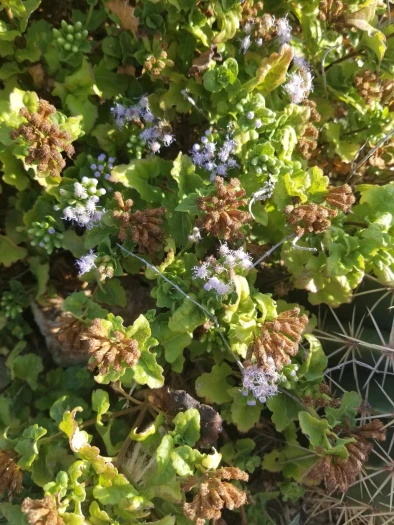Jack In The Bush
(Chromolaena corymbosa)
Jack In The Bush (Chromolaena corymbosa)
/
/

© Guy Babineau
CC BY 4.0
Image By:
© Guy Babineau
Recorded By:
Copyright:
CC BY 4.0
Copyright Notice:
Photo by: © Guy Babineau | License Type: CC BY 4.0 | License URL: http://creativecommons.org/licenses/by/4.0/ | Uploader: guy23 | Publisher: iNaturalist |


Estimated Native Range
Climate Requirements for Cypress, California
| This Plant | Your Site | Plant Suitability for Your Location | ||
|---|---|---|---|---|
| • Precipitation | 45" - 87" | 13" | Your precipitation may be insufficient for this plant. Irrigate N" / year. | Irrigate N" / year |
| • High Temp. | 76°F - 91°F | 84°F | Your summer temperatures are normal for this plant. | Excellent |
| • Low Temp. | 18°F - 69°F | 45°F | Your winter temperatures are normal for this plant | Excellent |
This plant should grow well at your location with about N inches per year (Y minutes per month) of irrigation.
Summary
Chromolaena corymbosa, commonly known as Jack in the bush, is a perennial shrub native to tropical regions of South and Central America, including Brazil, Venezuela, and Colombia. It is typically found in disturbed areas, secondary forests, and along forest edges. This species can grow to a height of 1.5-2 meters and a width of 1-1.5 meters. Chromolaena corymbosa has a bushy form with small, white to pale purple flowers that bloom in clusters, known as corymbs, from which the species derives its name. The flowering season extends throughout the year in its native range, with flowers that are modest in showiness.
Jack in the bush is appreciated for its rapid growth and its ability to attract pollinators such as butterflies. It is used in tropical gardens for informal hedges or as a background plant in borders due to its dense foliage. In cultivation, it requires well-drained soil, moderate water, and thrives in full sun to part shade conditions. While not commonly available in the nursery trade, it can be propagated from cuttings or seeds. Gardeners should be aware that in some regions outside its native range, Chromolaena corymbosa can become invasive, so caution is advised when planting it.CC BY-SA 4.0
Jack in the bush is appreciated for its rapid growth and its ability to attract pollinators such as butterflies. It is used in tropical gardens for informal hedges or as a background plant in borders due to its dense foliage. In cultivation, it requires well-drained soil, moderate water, and thrives in full sun to part shade conditions. While not commonly available in the nursery trade, it can be propagated from cuttings or seeds. Gardeners should be aware that in some regions outside its native range, Chromolaena corymbosa can become invasive, so caution is advised when planting it.CC BY-SA 4.0
Plant Description
- Plant Type: Shrub
- Height: 3-5 feet
- Width: 2-3 feet
- Growth Rate: Moderate
- Flower Color: White
- Flowering Season: Summer, Fall
- Leaf Retention: Semi-Deciduous
Growth Requirements
- Sun: Full Sun, Part Shade
- Water: Medium
- Drainage: Medium
Common Uses
Bee Garden, Border Plant, Butterfly Garden, Low Maintenance
Natural Habitat
Disturbed areas, secondary forests, and along forest edges in tropical regions of South and Central America
Other Names
Common Names: Moya De Santa Maria
Scientific Names: Chromolaena corymbosa, Ageratum conyzoides, Ageratum conyzoides, Eupatorium atriplicifolium, Eupatorium corymbosum, Eupatorium repandum, Eupatorium triangulare, Osmia corymbosa, Osmia repanda
GBIF Accepted Name: Chromolaena corymbosa